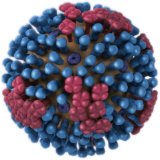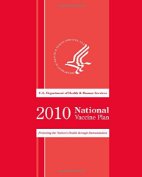by Barbara Loe Fisher
National Vaccine Information Center
Americans have never been big fans of flu shots. During the 2009 “swine flu” influenza A pandemic, only about 40 percent of adults bothered to roll up their sleeves. 1 Last year, flu vaccine rates were still just 47 percent for adults but pediatricians had vaccinated 75 percent of children under two years old. 2
Perhaps it is because parents are being thrown out of pediatricians’ offices if they don’t give their children every federally recommended vaccine – or maybe it is just because adults can talk about how they felt after getting vaccinated and infants and children under age two cannot.

How many times has someone told you: “The year I got a flu shot is the only year I got sick” or maybe you learned that the hard way yourself after getting vaccinated.
Doctors insist that just because we get sick with a fever, headache, body aches and a terrible cough that hangs on for weeks after getting vaccinated, it doesn’t mean the vaccine made us sick. They say it was just a “coincidence” because correlation does not equal causation. 3 4
Well, that may be true some of the time, but now the CDC is admitting that flu shots don’t prevent influenza most of the time. 5 In fact, studies show that a history of seasonal flu shots can even make people more susceptible to getting sick with a fever, headache, body aches and a terrible cough that hangs on for weeks! 6 But just like with pertussis infections, a lot of people also get and transmit influenza infections without showing any symptoms at all. 7 8 9
Previous Flu Shots Raised Risks for Pandemic Flu
During the 2009 swine flu pandemic, scientists in the Netherlands asked a big question: Do annual flu shots preventing natural influenza A infections in infants and young people increase their risk of illness and death when a highly pathogenic pandemic influenza strain develops and circulates? 10 The answer to that big question was “Yes” when, in 2010, Canadian health officials confirmed that school aged children and healthy young adults, who had gotten a flu shot the previous season, were at twice the risk of coming down with pandemic A swine flu in 2009 that was severe enough to require a trip to the doctor’s office. 11
Then, between 2011 and 2014, researchers in Europe published a number of studies providing evidence that immune responses to natural influenza infections and vaccinations are quite different, and very much affect the quality and length of immunity. 12
Most People Don’t Show Flu Symptoms, Vaccinated People More Likely to Get Sick

Here is what they found when they studied the 2009/2010 pandemic flu season:
- First, repeated annual flu shots may hamper certain kinds of immune responses, making young vaccinated children, who have never been naturally infected with influenza virus, “more susceptible to infection with a pandemic influenza virus of a novel subtype.” 13
- Second, about 75 percent of children and adults who got influenza didn’t show any symptoms, and those who did have symptoms self managed without needing medical attention. Plus, hospitalizations and death rates for confirmed influenza infections were very low in the flu pandemic.
- Third, many unvaccinated persons, who did not get sick during the pandemic flu season, were “silently” infected with pandemic influenza anyway and mounted a strong T-cell immune response to the new influenza strain. 14
- Fourth, compared with people who remained unvaccinated, those who got a pandemic flu shot were more likely to get sick with an “influenza like illness” (ILI) caused by a rhinovirus. 15
Rhinoviruses cause the common cold and other upper and lower respiratory infections that give you a fever, headache, body aches and a terrible cough that hangs on for weeks. So correlation does not always equal causation, but sometimes it really does.
Now let’s take a closer look at flu vaccine effectiveness and influenza related hospitalizations and deaths in the U.S.
CDC’s Influenza Morbidity & Mortality Numbers Don’t Add Up
For years, the CDC has been promoting the notion that flu shots are between 70 and 90 percent effective in preventing influenza 16 and everybody needs to get vaccinated because type A and type B influenza causes more than 200,000 hospitalizations and 36,000 deaths in the U.S. every year. 17
Here are the facts:
FACT: There were about 2.5 million deaths in the U.S. in 2013, mostly from heart disease, cancer and other chronic diseases. About 57,000 deaths were categorized “influenza and pneumonia” with the majority occurring in people over age 65. 18Because pneumonia is not only a complication of influenza, but is also a complication of many other viral and bacterial respiratory infections, the breakdown for 2013 was about 3,700 influenza-classified deaths and 53,000 pneumonia deaths in all age groups, with 20 influenza deaths in infants under age one.19

FACT: A federal health agency reported that, in 2004, there were about 37,000 Americans hospitalized for influenza with patients over age 85 twice as likely to die. 20 The figure of 37,000 influenza hospitalizations is five times less than the number of 200,000 the CDC has been using. That is because CDC officials came up with their influenza hospitalization “guesstimate” by counting a lot of hospitalized people, who also had pneumonia, respiratory and circulatory illnesses, which they counted as probablyassociated with influenza. 21 22
FACT: Influenza-like-illness (ILI) symptoms, such as fever, sore throat, congestion, cough, body aches and fatigue that are severe enough to prompt a trip to the doctor, rarely turn out to be actual type A or B influenza infection. In the past two years, when the CDC tested specimens of influenza-like-illness cases, only between 3 percent and 18 percent were positive for type A or B influenza. 23 24 Most of the respiratory illness cases making people sick enough to seek medical care were caused by other viruses or bacteria.
So just how effective IS that flu shot your doctor tells you to get every year? 25
Flu Vaccine Effectiveness: From Zero to Low
After studying influenza infections during 2012-2013 in the states of Michigan, Wisconsin, Washington and Pennsylvania, U.S. public health officials reported in 2015 that flu vaccine effectiveness was quite low: between 39 percent and 66 percent, depending upon the influenza strain. 26

Here is what else they learned:
- For adults over age 65 years, vaccine effectiveness was close to ZERO.
- There was “unexpectedly low vaccine effectiveness for the influenza A strain among older children compared to other age groups,” especially for those who had gotten previous annual flu shots.
- S. health officials also found that unvaccinated people were more likely to report their general health status as “excellent” compared to vaccinated people.
In January 2016, U.S. government officials finally publicly admitted that flu vaccines are only 50 to 60 percent effective at preventing lab confirmed influenza requiring medical care in most years. 27 In fact, a CDC analysis of flu vaccine effectiveness for the past decade – from 2005 to 2015 – demonstrated that more than half the time, seasonal flu shots are less than 50 percent effective!
In 2004-2005, the flu shot failed 90 percent of the time, 28 and last year failed 77 percent of the time. 29 Estimates for flu shot effectiveness this year is a not very impressive 59 percent. 30
Public Health Doctors Push Ineffective, Reactive Flu Vaccine
The sad part is that public health doctors have known since the first influenza vaccine was licensed in 1945, that influenza vaccines don’t work very well. 31 3233 But that did not stop them from recommending in 2010 that every child and adult should get an annual flu shot starting at six months old and through the last year of life. 34 And by 2013, health care workers declining an annual flu shot were being fired from their jobs. 35 36 37

This is being done, despite the fact that influenza vaccine reactions causing inflammation of the nerves, known as Guillain Barre Syndrome, and other chronic health problems are the number one most compensated vaccine injuries for adults in the federal vaccine injury compensation program, 38 which has awarded more than 3.3 billion dollars to victims of government recommended vaccines under the National Childhood Vaccine Injury Act of 1986. 39
Public Health Doctors Admit They Don’t Know Much About Flu Virus or How to Measure Immunity
This is being done, despite the fact that scientists know that there are several hundred types of type A, B, and C influenza viruses that are constantly recombining and creating new virus strains. 40 41 Public health officials admit they still do not know how to accurately predict when and how influenza viruses will mutate and which strains will be dominant in a given flu season, and they still don’t know how to measure immunity and long term protection. 42 43
In 2011, Michigan epidemiologists investigated influenza infections in healthy men and women and concluded that simply measuring the number of antibodies in the blood should not be used as a surrogate for vaccine efficacy because antibody titers “may not protect.” 44 In 2013, the CDC confirmed that high antibody titers, especially in seniors and young children, does not predict flu vaccine effectiveness. 45
If doctors have been using an inaccurate blood test to measure immunity and vaccine efficacy for 70 years, what does that say about the accuracy of 70 years of vaccine studies?
Public health officials also admit they don’t know:
- how the genetic diversity of viruses and bacteria interact with human genes; 46 or
- how age, natural immunity, vaccination and genetics affect individual immune responses to influenza infection; 47 or
- how repeated natural infections and vaccinations affect individual and herd immunity. 48 49
National Vaccine Plan: Flu Shots From Cradle to Grave

It is shocking that government health officials have devised a National Vaccine Plan that lobbies for every single American to get a flu shot from cradle to the grave before the real science is in. 50 51 Putting vaccine policy before the science is bad public health policy. Conducting uncontrolled vaccine experiments on people, who have been taught to believe and trust government health policy and now are being forced to obey strict “no exceptions” vaccine laws, has far reaching consequences. 52
Go to NVIC.org and learn more. Sign up for the free NVIC Advocacy Portal and become active in your state to protect vaccine exemptions from being eliminated by the Pharma, Medical Trade and Public Health industries.
It’s your health. Your family. Your choice.
References
1 CDC. 2009-2010 Flu Season. Seasonal and H1N1 Influenza Vaccine Coverage. May 13, 2011.
2 CDC. Flu Vaccine Coverage, United States 2014-2015 Influenza Season. Jan. 28, 2016.
3 Anaegbunam JA. Refusing the flu shot: Respecting the patient’s right to choose. KevinMD.com Jan. 29, 2014.
4 DHHS. Vaccine Adverse Events Reporting System (VAERS). https://vaers.hhs.gov/data/index
5 CDC. Influenza Vaccine Effectiveness: How Well Does the Flu Vaccine Work? Dec. 21, 2015.
6 Magalhaes I, Eriksson M, Linde C et al. Difference in immune response in vaccinated and unvaccinated Swedish individuals after the 2009 influenza pandemic. BMC Infectious Diseases 2014; 14: 319.
7 Ibid.
8 The Lancet. Three-quarters of people with seasonal and pandemic flu have no symptoms. Eurekaalert Mar. 16, 2014.
9 Fisher BL. Pertussis Microbe Outsmarts the Vaccines As Experts Argue About Why. NVIC Newsletter Mar. 27, 2016.
10 Bodewes R, Joost HCM et al. Yearly influenza vaccinations: a double-edged sword? The Lancet 2009; 9(12): 784-788.
11 Skowronski DM, de Serres G, Crowcroft NS et al. Association between the 2008-09 seasonal influenza vaccine and pandemic H1N1 illness during Spring Summer 2009: four observational studies from Canada. PLoS Med 2010; 7(4).
12 Bonduelle O, Carrat F, Luyt CE et al. Characterization of pandemic influenza immune memory signature after vaccination or infection. J Clin Investigation 2014; 124(7): 3129-3136.
13 Bodewes R, Fraaij PLA, Geelhoed-Mieras MM et al. Annual Vaccination against Influenza Virus Hampers Development of Virus-Specific CD8+ T Cell Immunity in Children. J Virol 2011; 85(22): 11995-12000
14 Magalhaes I, Eriksson M, Linde C et al. Difference in immune response in vaccinated and unvaccinated Swedish individuals after the 2009 influenza pandemic. BMC Infectious Diseases 2014; 14: 319.
15 Ibid.
16 Fiore AE, Bridges CB, Cox NJ. Seasonal influenza vaccines. Curr Top Microbiol Immunol 2009; 333: 43-82.
17 Reinberg S. Flu Season Off to A Very Late Start: CDC. Health Day Feb. 23, 2012
18 Xu J, Murphy SL et al. Deaths: Final Data for 2013. National Vital Statistics Reports Feb. 16, 2016. 64(2).
19 Ibid. Table 10. Number of deaths from 113 selected causes…by age: United States, 2013. Page 40.
20 Agency for Healthcare Research and Quality. Influenza Most Deadly for the Very Elderly. AHRQ Press Release Nov. 7, 2006.
21 CDC. Seasonal Influenza Associated Hospitalizations in the United States. June 24, 2011.
22 Thompson WW, Shay DK et al. Influenza Associated Hospitalizations in the United States. JAMA 2004; 242(11): 1333-1340.
23 CDC. Influenza Activity – United States, 2014-2015 Season and Composition of 2015-2016 Influenza Vaccine.MMWR June 5, 2015; 64(21): 583-590.
24 CDC. Update: Influenza Activity – United States, October 4, 2015 – February 6, 2016. MMWR Feb. 19, 2016; 65(6): 146-153.
25 Fiore AE, Bridges CB, Cox NJ. Seasonal influenza vaccines. Curr Top Microbiol Immunol 2009; 333: 43-82.
26 McLean HQ, Thompson MG, Sundaram ME et al. Effectiveness in the United States During 2012-2013: Variable Protection by Age and Virus Type. J Infect Dis 2015; 211(10): 1529-1540.
27 CDC. Influenza Vaccine Effectiveness: How Well Does the Flu Vaccine Work? Dec. 21, 2015.
28 CDC. Seasonal Influenza Vaccine Effectiveness 2005-2015. Dec. 18, 2015.
29 CDC. Early Estimates of Seasonal Influenza Vaccine Effectiveness – United States, January 2015. MMWR Jan. 16, 2015; 64(01): 10-15.
30 CDC. Flu Vaccine Nearly 60 percent effective. CDC Press Release Feb. 24, 2016.
31 Hannoun C. The Evolving History of Influenza Viruses and Influenza Vaccines: Circulation of Influenza Viruses and Selection of Vaccine Strains. Expert Rev Vaccines 2013; 12(9): 1085-1094.
32 Fisher BL. Flu Vaccine: Missing the Mark. The Vaccine Reaction Spring 2004.
33 Jefferson T, DiPietrantonj C et al. Vaccines for preventing influenza in healthy adults. Cochrane Database Syst RevJuly 7, 2010.
34 CDC. Prevention and Control of Influenza with Vaccines – Recommendations of the Immunization Practices Advisory Committee (ACIP), 2010. MMWR Aug. 6, 2010; 59(RR08): 1-62.
35 Hendricks L. Six at FMC out over flu shots. Arizona Daily Sun Jan. 18, 2013.
36 Fisher BL. Women, Vaccines and Bodily Integrity. NVIC Newsletter Jan. 24, 2013.
37 Immunization Action Coalition (IAC). First Do No Harm: Mandatory Influenza Vaccination Policies for Healthcare Personnel Help Protect Patients. 2014.
38 Wrangham T. Vaccine Injury Claims Expected to Increase in 2016: Federal Advisory Committee Update. NVIC Newsletter Feb. 22, 2016.
39 HRSA. Vaccine Injury Compensation Program (VICP) Statistics: Total Awards Paid. HRSA Apr. 1, 2016.
40 Fleischmann WR. Viral Genetics. In: Medical Microbiology, 4th Edition. University of Texas Medical Branch at Galveston 1996.
41 Krejitz JH, Fouchier RA, Rimmelzwaan GF. Immune responses to influenza virus infection. Virus Res 2011; 162(1-2): 19-30.
42 Combadiere B, Siberil S, Duffy D. Keeping the memory of influenza viruses. Pathol Biol (Paris) 2010; 58(2).
43 NIH. Factors that may influence influenza vaccine effectiveness. Science Daily Apr. 19, 2016.
44 Ohmit SE, Petrie JG, Cross RT et al. Influenza Hemagglutination-Inhibition Antibody Titer as a Correlate of Vaccine-Induced Protection. J Infect Dis 2011; 204: 1878-1885.
45 Reber A, Katz J. Immunological assessment of influenza vaccines and immune correlates of protection. Exp Rev Vaccines 2013; 12(5): 519-536.
46 Lemaire D, Barbosa T, Rihet P. Copying with genetic diversity – the contribution of pathogen and human genomics to modern vaccinology. Braz J Med Biol Res 2012; 45(5): 376-385
47 Bonduelle O, Carrat F, Luyt CE et al. Characterization of pandemic influenza immune memory signature after vaccination or infection. J Clin Investigation 2014; 124(7): 3129-3136.
48 Combadiere B, Swendlow DL, Borse RH et al. Keeping the memory of influenza viruses. Pathol Biol (Paris) 2010;58(2).
49 Neuzil KM. How Can We Solve the Enigma of Influenza Vaccine Induced-Protection? J Infect Dis 2015; 211(10): 1517-1518.
50 DHHS. US National Vaccine Plan. National Vaccine Program Office 2010.
51 U.S Department of Health and Human Services. Healthy People 2020 Immunization and Infectious Diseases Goals: Increase percentage of children and adults who are vaccinated annually against seasonal influenza. DHHSApr. 26, 2016.
52 NVIC. National Vaccine Information Center Says Proposed 21st Century Cures Act Will Endanger the Public Health by Lowering FDA Licensing Standards. Businesswire July 22, 2015.
53 Fisher BL. Vaccine Injury Compensation: Government’s Broken Social Contract with Parents. NVIC NewsletterNov. 2, 2015
Read the full article at NVIC.org
Comment on this article at VaccineImpact.com
Medical Doctors Opposed to Forced Vaccinations – Should Their Views be Silenced?
One of the biggest myths being propagated in the compliant mainstream media today is that doctors are either pro-vaccine or anti-vaccine, and that the anti-vaccine doctors are all “quacks.”
However, nothing could be further from the truth in the vaccine debate. Doctors are not unified at all on their positions regarding “the science” of vaccines, nor are they unified in the position of removing informed consent to a medical procedure like vaccines.
The two most extreme positions are those doctors who are 100% against vaccines and do not administer them at all, and those doctors that believe that ALL vaccines are safe and effective for ALL people, ALL the time, by force if necessary.
Very few doctors fall into either of these two extremist positions, and yet it is the extreme pro-vaccine position that is presented by the U.S. Government and mainstream media as being the dominant position of the medical field.
In between these two extreme views, however, is where the vast majority of doctors practicing today would probably categorize their position. Many doctors who consider themselves “pro-vaccine,” for example, do not believe that every single vaccine is appropriate for every single individual.
Many doctors recommend a “delayed” vaccine schedule for some patients, and not always the recommended one-size-fits-all CDC childhood schedule. Other doctors choose to recommend vaccines based on the actual science and merit of each vaccine, recommending some, while determining that others are not worth the risk for children, such as the suspect seasonal flu shot.
These doctors who do not hold extreme positions would be opposed to government-mandated vaccinations and the removal of all parental exemptions.
In this article, I am going to summarize the many doctors today who do not take the most extremist pro-vaccine position, which is probably not held by very many doctors at all, in spite of what the pharmaceutical industry, the federal government, and the mainstream media would like the public to believe.






